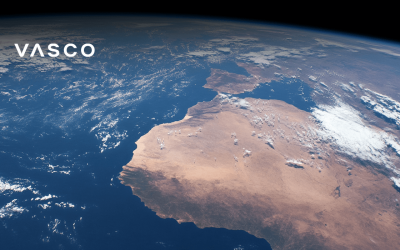There are many spoken languages in the world, although this number is dropping every year.
In the era of globalization, less spoken languages tend to get dominated by the most spoken languages in the world and the rarest ones are known by just a few native speakers.
Let’s take a look at what is the most spoken language in the world today, used both by native and taught users.
We will also try to determine if this trend might change in the future, so stay with us for more insight!
FAQ:
Which is the most popular language in the world?
What is the top 10 most spoken languages in the world in order?
What is the most spoken language on Earth?

Table of Contents:
How many languages are there in the world?
According to the catalog completed by Ethnologue, there are over 7,100 languages spoken in the world. Out of this number, almost 2,200 languages are used in Asia and only 230 in Europe. Sadly, the number of native speakers drops each year and endangers their survival.
Why are world languages going extinct?
While the most official languages are spoken by millions of people on different continents, there are languages spoken just by a handful of people.
For instance, 75 Native American languages in South and Central America are now spoken only by small groups of elders and are therefore determined to extinct soon (Linguistic Society of America).
Can we preserve the other languages?
Yes, we can! Luckily, there are many linguists that are passionate about preserving the extinction of languages, and sometimes in a very creative way.
A good example might be the Busuu application to learn languages that took its name from the language that is now spoken by only 8 people. This way, they are raising people’s awareness of this and all the other languages going extinct.

Most spoken languages: short history
Before we dwell on which are the most widely spoken languages, it’ important to understand how this state came to be.
Historically, there were many official languages, that shaped the world of linguistic that we experience today.
Let’s check them now!

Latin
In the ancient era, Latin was an official language of Roman Empire politics and due to its expansive politics, it became the most dominant too.
Common language, new language
More than half of the currently known world could speak Latin or some dialect of it. It’s no surprise, as many European and African countries were once part of the great Roman Empire.
But as the colonization made people speak a language that wasn’t their mother tongue, some new changes began to happen to the most common language at the times.
Non-native speakers started using so-called vulgar Latin, which in turn heavily influenced the origins of each romance language (e.g. lingua franca). French, Spanish, Italian, Portuguese and Romanian are the examples of those closely related languages.
Official language goes dead
While Latin was one of the most widely spoken languages in the ancient world, in the Middle Ages it was reserved for the elites. Only scholars studied language well enough to communicate with it on a regular basis.
It was also an official language of the Catholic Church, which helped to preserve it as a single language, but with zero number of native speakers, it slowly became a dead tongue.

Arabic
While Latin is the first language that comes to mind, when thinking about Medieval age, it’s worth to mention that classical Arabic was also one of the most spoken languages in the world at that times.
A million speakers, a million inventions
Middle Ages were the golden era for the science development outside of Europe. If it wasn’t for the work of Arab mathematicians, chemists, physicians and philosophers, the progress from Middle Ages to Renaissance might not have been the same!
We can see this heritage today where we use modern standard Arabic numbers, and have many of the science terms derived from Arabic words.

French
During the modern ages (18th to 19th century), the French language and culture conquered the world, becoming the most widely spoken language until WW1.
The official language of culture and art
Spoken and written French was considered not only a sign of a well-educated individual, but it contributed to creating the art of conversation, savoir-faire and, maybe most importantly, a specific jargon and jokes. The latter we may even compare with modern day use of English with international memes and catchphrases.
Democracy is fashionable
Speaking French language was in a good taste, just as following the Parisian trends for fashion, music and art. But even their social changes inspired the world, ever since the French Revolution has defined the new approach to freedom and equality.
France was an unquestionable pioneer when it comes to creating the first republican country. However, it was a bumpy ride and anti-monarchists didn’t always bring the good changes for the French citizens.
But with time, as the political system has stabilized, the new country emerged with consititution that ensured the people’s freedom and equality.
It wasn’t much longer, that USA and Poland have followed, creating their own foundations for the republican country.

English
It may be hard to believe, but just two centuries ago, English wasn’t one of the most widely spoken languages in the world and was used almost exclusively by native speakers.
Still, with the conquest of British Empire and rising presence of the United States of America, it soon started to change.
Official language turned favorite
The first reason for why English became one of the most spoken languages, was the colonization of British Empire, and making English an official language in many countries.
Nevertheless, it soon appeared that non-native speakers prefer English as a second language, especially when opposed to French. Easy to grasp grammar, syntax and vocabulary contributed to the wide use of the English language even outside the countries where it was an official language.
This trend continues today, as still English is still one of the most spoken languages in the world. Some languages even incorporated English words to its own vocabulary. It is also an official language of United Nations.

Chinese
Interestingly enough, one of the most spoken languages today comes from the Sin-Tibetan family, which is believed to be Indo-European related at some point.
However, both protolanguages evolved into different writing systems, semantics and syntax. Ultimately, they gave birth to the completely separate languages.
The origins of a new language
The first widely spoken Chinese language was the “Old Chinese” known also as “Archaic Chinese”. It’s believed to be spoken in the 11th to 7th centuries B.C. It then evolved into Middle Chinese, spoken since around 7th to 10th A.D.
The next centuries were crucial to the evolution of this tonal language. The Mandarin Chinese language emerged during the Black Death period, and Chinese characters were then organized in a system that more or less survived until today.
Contemporary Chinese
Today, there are two main languages spoken by the native speakers of China: Cantonese and Mandarin. The latter is a much more widely spoken language, although it comes with many dialects.
Chinese language is undoubtedly one of the most dominant languages in the world, likely because of the high number of native speakers and the China’s progress during the last decades.
Summary
We still live in times when it’s usually not enough to speak just our native language. This is the case especially if we speak a language that is used by less than a million native speakers.
In order to be mutually intelligible, we should consider learning a language that is preferred by the other non-native speakers around the world. It’s much easier to get along at work, if the mother tongue isn’t our only language.
So, having that in mind, let’s see what are the most spoken languages as of today!

What are the most common languages in the world?
Usually, when asking people to guess the answer, those options come to their mind: English, Chinese or Spanish.
Now, each of them comes from a different language family and has a rich history that has shaped its form today.
First, let’s consider the aspect of languages used by native speakers.
1. Chinese
When it comes to being represented by its native speakers, Chinese is definitely a winner. It’s the most popular language with 1.3 billion native speakers, with Mandarin language spoken by majority of them.
Fun fact:
There are officially 302 living languages in China, although up to this day there is no clear categorization on which of them are dialects. Sadly, researchers claim that most of them are in their extinction.
The honorary mentions:
English comes as the second most widely spoken language with its 1.132 billion native speakers and Hindi as the third one, with 615 million native speakers.
What is the most spoken language on Earth?
Now we know what is the most spoken language in the world according to its native speakers. But which one is actually the most spoken language worldwide both by the native speakers and non-native speakers?
Let’s see!
2. English
Despite the growing popularity of Mandarin, English is still an unquestionable winner when it comes to the number of world’s population speaking it, which is roughly estimated to be 1.5 billion total speakers.
Fun fact:
English is an official language in 67 different countries, but less than 400 million use it as their first language! If we considered only the first-language speakers, Spanish would be a language spoken by more people!

Which language will be most spoken in the future?
There are a lot of research papers on which languages might be dominant in the future years. The Engco Model, one of the most popular methods to predict language trends, claim that by 2050, the most spoken languages will be:
-
Mandarin
-
Spanish
-
English
-
Hindi-Urdu (representing the Indian languages)
-
Arabic
That forecast doesn’t come as a surprise, considering the late years’ tendencies.
In 2011, Ethnologue research has shown 1.75 billion native English total speakers and 1.023 Mandarin Chinese coming as the second most spoken language. In 2017, they already swapped places, Chinese coming with 1,475 billion total speakers and English speakers being less than 1 billion.
The perspective of the total language users (not only the native speakers) is even more in the favor of Mandarin.
With China’s development and growing industries worldwide, learning this language is no longer just a hobby. There’s no doubt that it will become the most spoken language in the world, so before your next trip abroad, it might be a good idea to grab your handheld translator just in case!
Most spoken languages: summary
We live in the world with a rich cultural diversity. Each national language is a tribute to the history, tradition and culture of the region.
Celebrate the diversity
In the era of globalization, it’s more important than ever to appreciate the native speakers of all the languages in the world. Throughout the last decades, linguists have learnt many fascinating facts just by interviewing the native speakers of tribal languages. This knowledge transcends simple linguistics, and has given us some insight on human psyche as well.
With this in mind, the more language diversity there is in the world, the more we can learn about our minds.
Sadly, as some languages in the world have a number of native speakers dropping, this becomes a bigger challenge.
The solution might be to preserve at least one language in each language family. Luckily, cultural diversity becomes more common around the world, and native speakers are encouraged to use their mother tongue instead of the imposed language.
Sky is the limit
All of this has also influenced the learning trends in the world, with minorities coming out to light. More and more people are becoming Swahili speakers or intent to learn Malay language. There are even courses online that help you learn Bengali alphabet by studying Bengali script.
And if history is your hobby, you may want to learn more about Indo-Aryan language and how Indo-European related languages share their similarities.
Or to take on some more recent times, you can learn how former Soviet Union countries made the efforts to purify their languages out of rusicisms.
New opportunities
This doesn’t mean that the high number of native speakers decides on the language’s utility for science. Even the most spoken languages with hundreds of million speakers are still very precious for the linguists and culture studies.
But even more importantly, they are usually the must-know for the people who work in global companies or just travel around the world.
Unfortunately, some of us don’t feel that confident about learning the languages out Indo-European related family.
So, if you’re worried that learning Chinese might be too difficult for you, there are some good news. The technology is moving as fast as never before. There are more and more translation devices that help the non-native speakers out at work or during vacation.
Be sure to check our store where we present devices that let you speak 70+ languages in almost 200 countries. You can translate voice, photos and text in the blink of an eye, everywhere you go.
The devices have in-built SIM cards, which means no additional costs for the Internet access around the world.
Understand the world around you, and it may in turn help you understand yourself better!
| Rank | Language | Native Speakers | Total Speakers |
|---|---|---|---|
| 1 | English | 370 million | 1.5 billion |
| 2 | Mandarin Chinese | 920 million | 1.1 billion |
| 3 | Hindi | 340 million | 600 million |
| 4 | Spanish | 460 million | 540 million |
| 5 | Arabic | 310 million | 420 million |
In a nutshell:
There are over 7,100 languages spoken in the world, although this number is dropping every year. In the era of globalization, less spoken languages tend to get dominated by the most spoken languages in the world and the rarest ones are known by just a few native speakers. The most spoken language in the world today is English, used by both native and taught speakers. However, Mandarin Chinese is the most spoken language by native speakers, with 1.3 billion speakers. Languages become extinct when the number of native speakers drops too low. However, there are many linguists passionate about preserving the extinction of languages. Latin was the most widely spoken language in the ancient world, but it slowly became a dead tongue. Arabic was also one of the most spoken languages in the world in the Middle Ages. French was the most widely spoken language in the 18th and 19th centuries, but English has taken over this title in the last century. Chinese is one of the most dominant languages in the world, likely because of the high number of native speakers and the China’s progress during the last decades. According to research, the most spoken languages in the world by 2050 will be Mandarin, Spanish, English, Hindi-Urdu, and Arabic.











